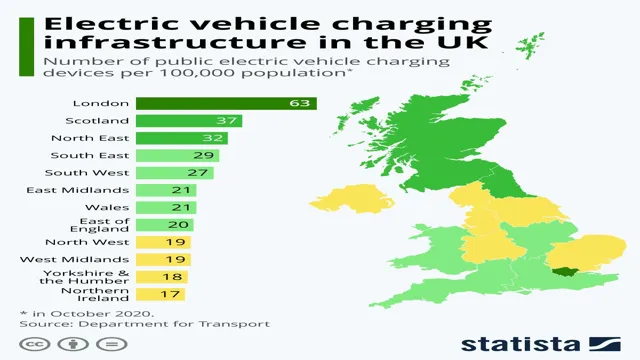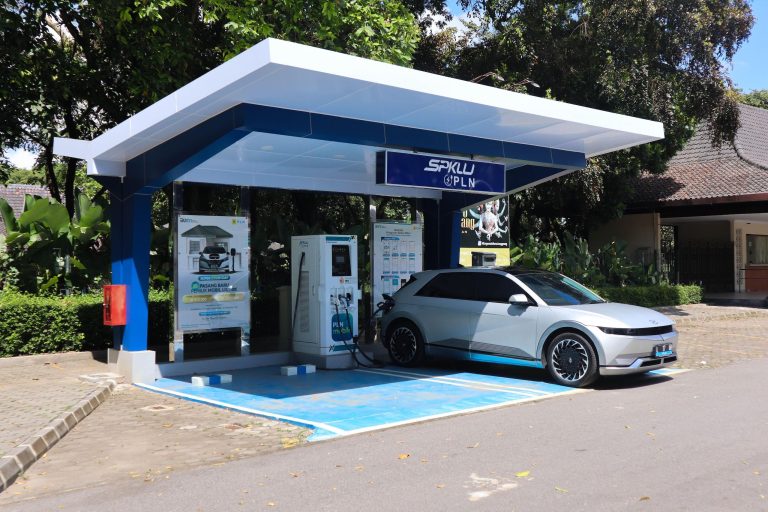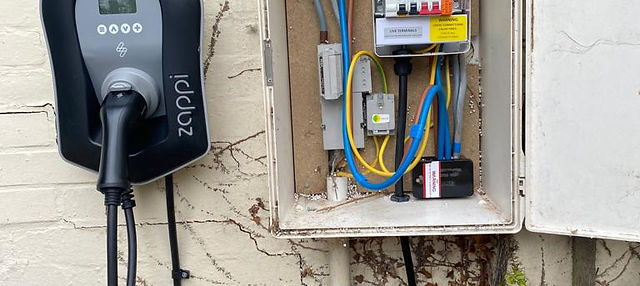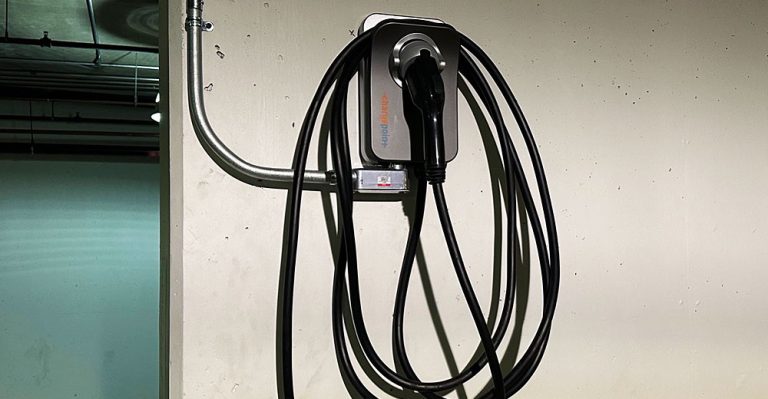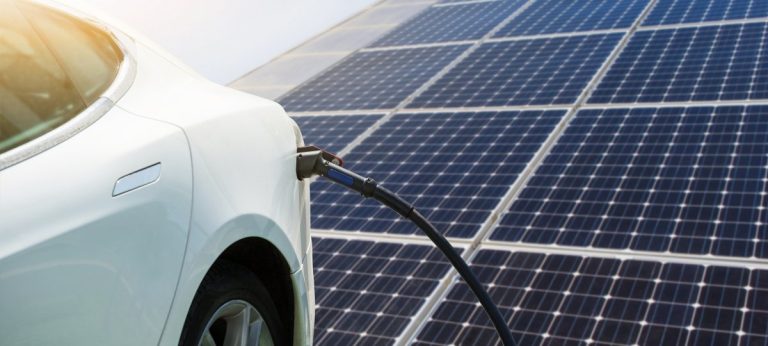The Future of Sustainable Transportation: The Need for Widespread Electric Car Charging Infrastructure in the United States!
Electric cars are gaining popularity in the US, and with this growth comes the need for more electric car charging stations. But what is the state of electric car charging in the US? As technology advances, more and more people are opting for electric cars, and the US has also set ambitious goals to transition to cleaner energy sources. However, the development of electric car charging infrastructure has not kept pace.
Despite the progress made in the last decade, charging infrastructure is still nowhere near the level that will be needed in the coming years. In this blog post, we will delve deeper into the current state of electric car charging in the US, and explore what needs to be done to improve it.
Current Infrastructure
Currently, the electric car charging infrastructure in the US is still in the process of being developed, with efforts being made by both private companies and government agencies to build out the necessary network of charging stations. While major cities and popular destinations tend to have a decent selection of charging points available, less populated areas still have limited options. To address this issue, programs such as the Federal Highway Administration’s Alternative Fuel Corridors initiative aim to expand the infrastructure across highways and rural areas.
However, there are challenges to building out a robust electric car charging network, such as the cost and difficulty of installing charging infrastructure in existing buildings and on public streets. Overall, while progress is being made, there’s still a long way to go before electric car owners in the US can rely on a comprehensive and easily accessible charging network for their vehicles.
Number of Charging Stations Nationwide
As more and more people make the switch to electric vehicles, the importance of having an extensive charging infrastructure becomes even more apparent. Currently, there are over 100,000 charging stations across the United States, with the number only growing by the day. In fact, many cities and states have set ambitious goals to expand their charging networks, with some hoping to have thousands of new charging stations installed within the next few years.
This increase in charging infrastructure is crucial to meet the growing demand for EVs and to encourage more people to make the switch. Think of it like a highway system – the more roads you have, the easier it is to get from point A to point B. The same goes for charging stations – the more available, the more confident people will feel about driving an electric car.
So if you’re thinking about making the switch to an EV, rest assured that the charging infrastructure is already well on its way to meeting your needs.
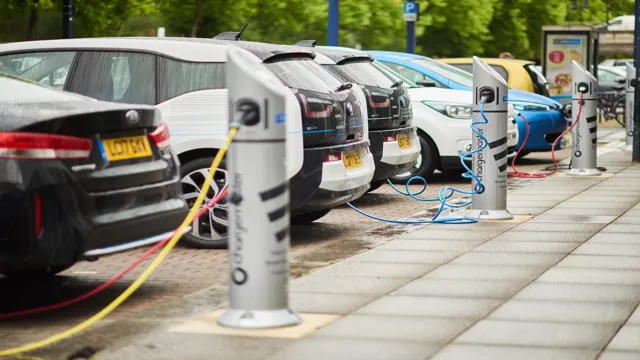
Location of Charging Stations
The location of charging stations is one of the most significant factors that determine the popularity and convenience of electric vehicles. Currently, the infrastructure for charging stations is still developing and varies by region. In urban areas, charging stations are typically found at public parking lots, malls, and other high-traffic areas.
Some companies have begun installing charging stations in workplaces to encourage employees to switch to electric vehicles, which can be more cost-effective and environmentally-friendly. However, in more rural areas, charging stations can be few and far between, an issue that can limit the practicality of electric vehicles on longer journeys. As technology advances and the number of electric vehicles on the road increases, it is essential for governments and private businesses to continue investing in expanding the charging station infrastructure.
In doing so, we can foster a cleaner and more sustainable transportation system.
Types of Charging Stations Available
When it comes to electric cars, one of the most critical components is the charging infrastructure, which currently comes in several types. Level 1 charging stations are the most basic and can be installed in homes or workplaces with a standard 120V outlet. But, they are also the slowest, providing about 4-5 miles of charge per hour.
Level 2 charging stations are much faster and are typically used in public places such as parking lots, hotels, and shopping centers. These chargers use 240V outlets and can provide up to 25 miles of charge per hour. Fast chargers, which are becoming more widespread, can provide up to 90 miles of charge in only 30 minutes, making them ideal for road trips.
Lastly, there are Tesla Superchargers, which provide the fastest charging speeds and can only be used by Tesla models. As more people switch to electric cars, having a well-established charging infrastructure will be critical in ensuring their convenience and appeal to the masses.
Growth Projections
As electric cars continue to gain popularity, the need for EV charging infrastructure in the US is growing rapidly. The growth projections for electric car charging infrastructure are impressive, with the market expected to grow at a CAGR of over 32% from 2021 to 2028, according to a recent report. This growth is driven by the increase in EV sales, government initiatives to promote clean energy, and the need for sustainable transportation.
The US government is investing heavily in the EV infrastructure, with President Biden’s infrastructure plan allocating $5 billion towards the installation of 500,000 charging stations across the country by 2030. The push for greener transportation options is gaining momentum, and it’s clear that electric car charging infrastructure is a crucial piece of the puzzle.
As more charging stations are built, electric vehicle adoption rates are likely to increase, creating a virtuous cycle towards sustainable transportation. With all these factors combined, it’s clear that the future of EV charging infrastructure in the US is very bright indeed.
Expected Increase in Charging Stations by 2025
The number of electric cars on the roads continues to rise at a remarkable pace, which has prompted an increase in demand for charging stations. As we move closer to a more sustainable future, it is projected that the number of charging stations worldwide will increase significantly by the year 202 According to a report by Bloomberg New Energy Finance, the number of electric vehicle charging stations globally is expected to reach 12 million by 2025, a significant increase from the 650,000 charging stations in operation in 201
This growth projection indicates that more people are turning to electric vehicles, a move that will bring significant benefits to the environment by reducing greenhouse gas emissions. With more EV charging stations on the horizon, range anxiety will gradually become a thing of the past, rendering the transition to electric cars even more seamless and convenient.
Cities Expecting the Most Growth
As populations grow, so do our cities. But which ones are projected to experience the most growth in the coming years? According to recent studies and data, the top cities expected to experience the most growth include Houston, Dallas, Atlanta, and Phoenix. These cities offer a combination of job opportunities, affordable living, and warm climates that make them attractive to both domestic and international migrants.
As a result, local economies are booming, infrastructure is being developed, and neighborhoods are expanding to accommodate the influx of people. But with growth comes challenges such as traffic congestion, shortages in affordable housing, and strain on resources. It will be interesting to see how these cities adapt and thrive in the face of unstoppable growth.
Challenges Ahead
As electric cars grow in popularity, the US will need to seriously address its electric car charging infrastructure. While the number of charging stations has increased rapidly in the past several years, there are still many parts of the country with limited access to charging stations, especially in rural areas. Additionally, the charging experience can be inconsistent, with different charging speeds and connector types at different stations.
It will take cooperation and investment from both the public and private sectors to build out a reliable network of charging stations that can keep up with the growing number of electric cars on the road. However, with a fully-functional electric car charging infrastructure, we can make electric cars more accessible and convenient for all, helping to shift the country towards a more sustainable future.
Limited Charging Station Availability in Rural Areas
As more and more people turn to electric vehicles, charging stations have become a crucial part of infrastructure development. However, limited charging station availability in rural areas can pose a significant challenge to the widespread adoption of EVs. While urban areas may have several charging options, rural areas often only have one or two stations.
This can lead to longer wait times for charging, as well as longer travel times as drivers may need to divert their route to reach a charging station. Additionally, limited charging stations can also make it difficult for those living in rural areas to use EVs as their primary mode of transportation. It’s crucial that efforts are made to increase the availability of charging stations in rural areas, so that everyone has access to the benefits of electric vehicles, regardless of where they live.
High Cost of Charging Station Installations
Installing electric vehicle charging stations can be an expensive undertaking for businesses and municipalities. The cost of materials, labor, and permitting can quickly add up, making it challenging for small businesses and lower-income communities to afford. Additionally, there is a lack of standardization in charging station models and equipment, which can make it difficult to choose the right products and providers and cause compatibility issues for EV owners.
Despite these challenges, it’s important to remember the long-term benefits of installing charging stations, such as attracting eco-conscious customers and reducing the carbon footprint of the area. As the demand for EVs continues to grow, investing in charging infrastructure is essential for promoting sustainable transportation options and preparing for a cleaner future.
Future of Electric Car Charging in the US
The electric car revolution in the US is in full swing, but the existing infrastructure for charging these vehicles still has a long way to go. A major barrier to widespread adoption of electric cars is the lack of charging stations across the country. However, there is good news on the horizon! The Biden administration has made clear its commitment to building a comprehensive network of electric vehicle charging stations, with a goal of installing 500,000 chargers across the US by 2030.
This investment in infrastructure will not only benefit drivers of electric vehicles, but also create jobs and stimulate economic growth. Electric vehicle charging technology is also evolving rapidly, with new fast-charging systems that can get a vehicle to an 80% charge in as little as 30 minutes. While there are still challenges ahead, the future of electric car charging in the US is looking brighter than ever.
Conclusion
As we look to the future of transportation, it’s clear that electric cars are no longer just a novelty, but a necessary evolution. However, for the widespread adoption of these eco-friendly vehicles, the development of a robust charging infrastructure is paramount. Without it, electric cars will be nothing more than paperweights.
But fear not, as we’ve seen in recent years, our nation is charging forward with electric car charging stations popping up in cities and along highways nationwide. It’s no longer an excuse to say “range anxiety” is holding you back – thanks to the expanding electric car charging infrastructure in the US, you can go further, faster, and cleaner than ever before.”
FAQs
What is the current status of electric car charging infrastructure in the US?
The US currently has more than 68,800 public charging stations, with California having the most stations and Washington DC having the most stations per capita. However, rural areas and some states have limited charging infrastructure.
How long does it take to charge an electric car in the US?
The charging time typically varies on the charging station, battery size, and connection speed. Level 1 charging (120 V) can take between 8 and 20 hours to fully charge, level 2 charging (240 V) can take between 3 to 8 hours while DC fast charging can take as little as 20-30 minutes.
Are there any incentives for installing electric car charging infrastructure in the US?
Yes, there are federal and state incentives for installing electric car charging infrastructure. The federal government offers a tax credit of up to 30 percent of the cost of installation, while some states offer tax rebates or credits, grants, or loan programs.
How do I find electric car charging stations in the US?
You can use various tools and mobile applications to find charging stations in the US, such as the US Department of Energy’s Alternative Fueling Station Locator, ChargePoint, PlugShare, and EVgo. These tools provide real-time information on the availability and location of charging stations.
